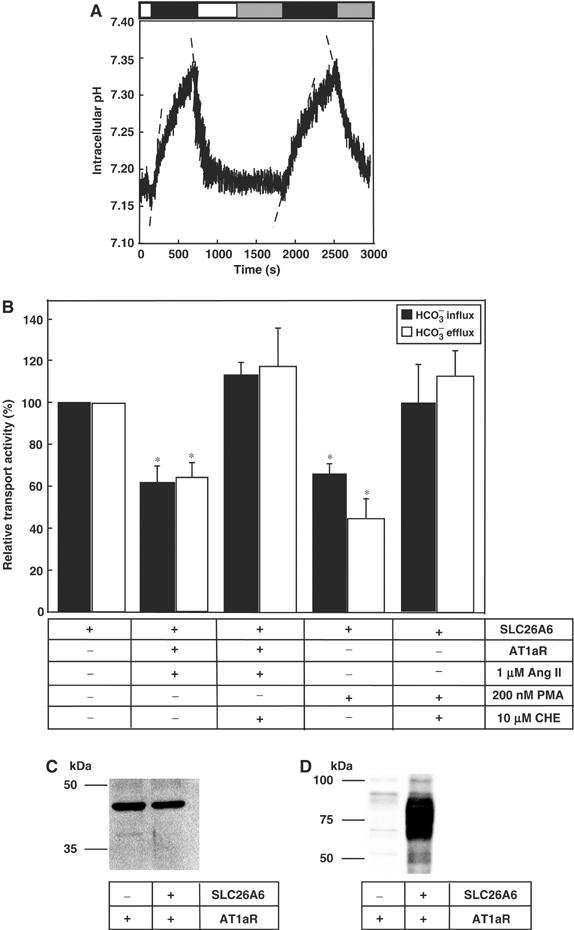Figure 4.

PKC activation inhibits SLC26A6 Cl−/HCO3− exchange activity. (A) HEK293 cells were cotransfected with human SLC26A6 and AT1a-AngII receptor, cDNAs. At 48 h after transfection, Cl−/HCO3− anion exchange assays were performed before, and 10 min after exposure to AngII (1 μM, gray bar). HEK293 cells were exposed to medium containing Cl− (open bar) or Cl−-free medium (black bar), to drive the exchange of Cl− for HCO3−. Initial rates of change of pHi during the first 100 s were estimated by linear regression (dashed line). (B) Mean values of anion transport activity relative to cells expressing SLC26A6 alone. Cells expressing AT1a receptors were exposed to AngII (1 μM) either in the absence or presence of the PKC inhibitor, CHE (10 μM). SLC26A6-expressing cells were also exposed to 10 min treatment with PMA, either in the presence or the absence of the PKC inhibitor, CHE (10 μM). Rates were measured during HCO3− influx (black bars) and HCO3− efflux (white bars). *P<0.05, n=4–5. (C) HEK293 cells were either transfected with AT1aR cDNA, or cotransfected with SLC26A6 and AT1aR cDNAs. Samples were analyzed by SDS–PAGE, transferred to PVDF membranes, and probed with either anti-AT1aR antibody (C) or anti-SLC26A6 antibody (D).
